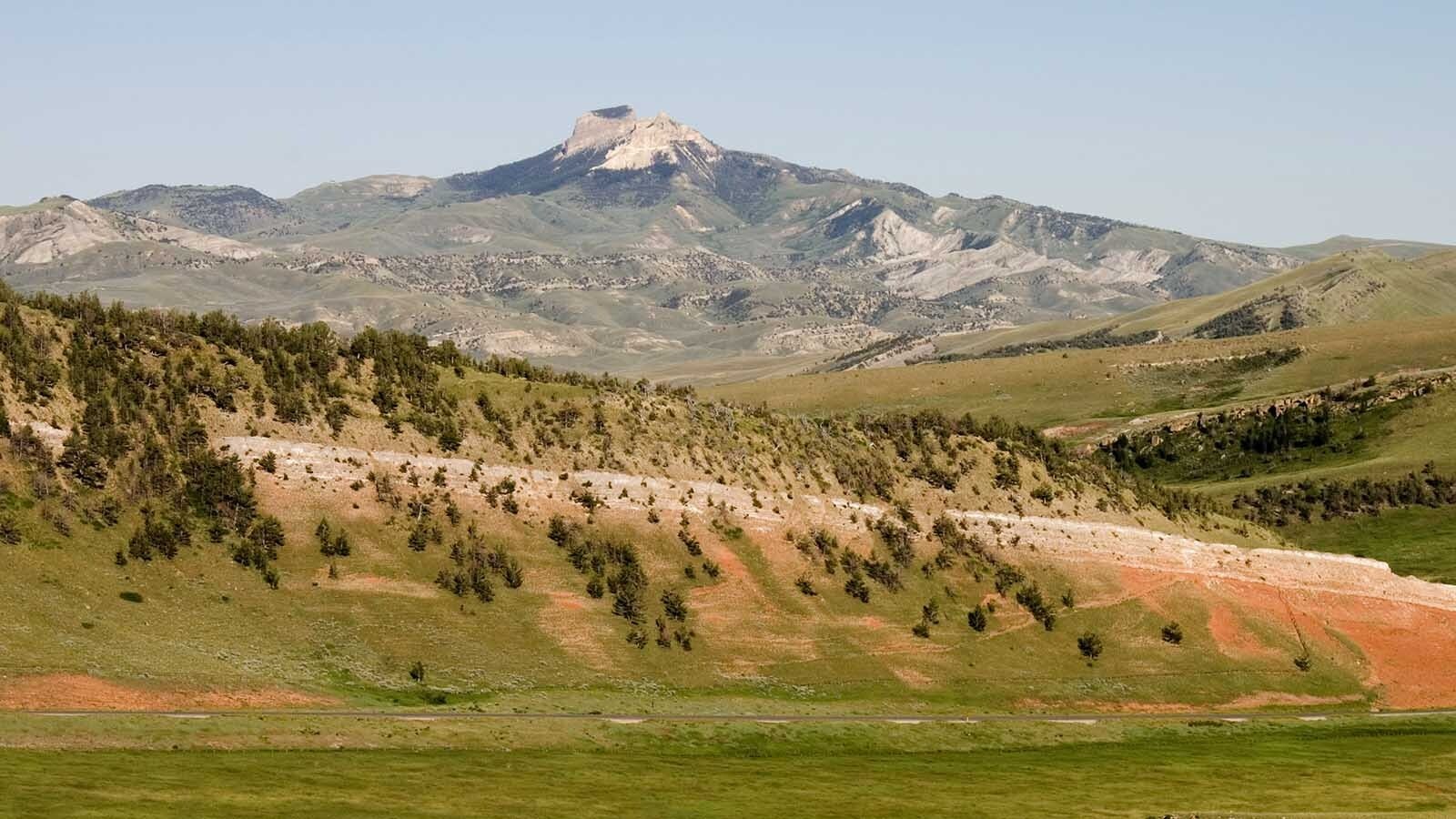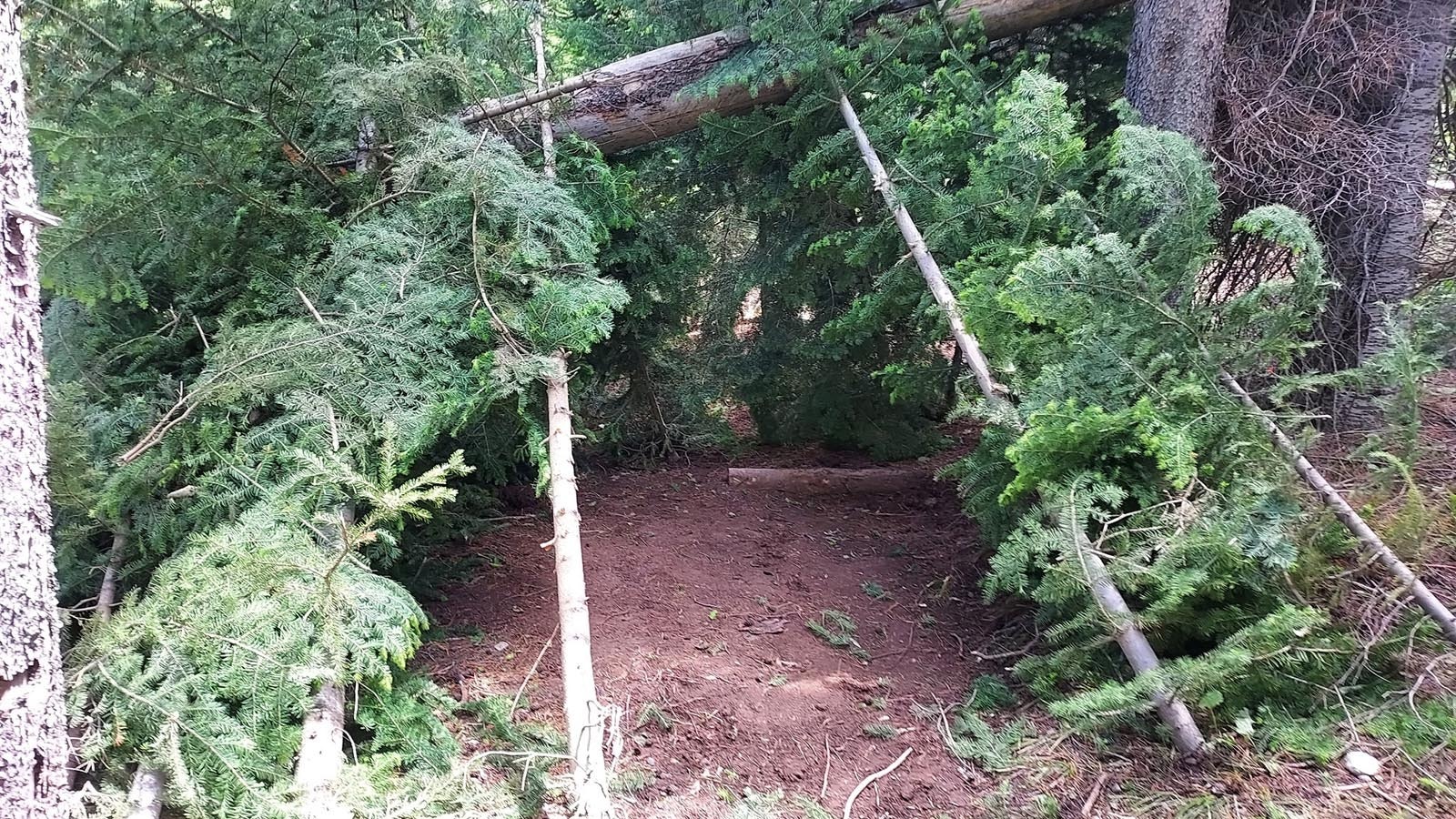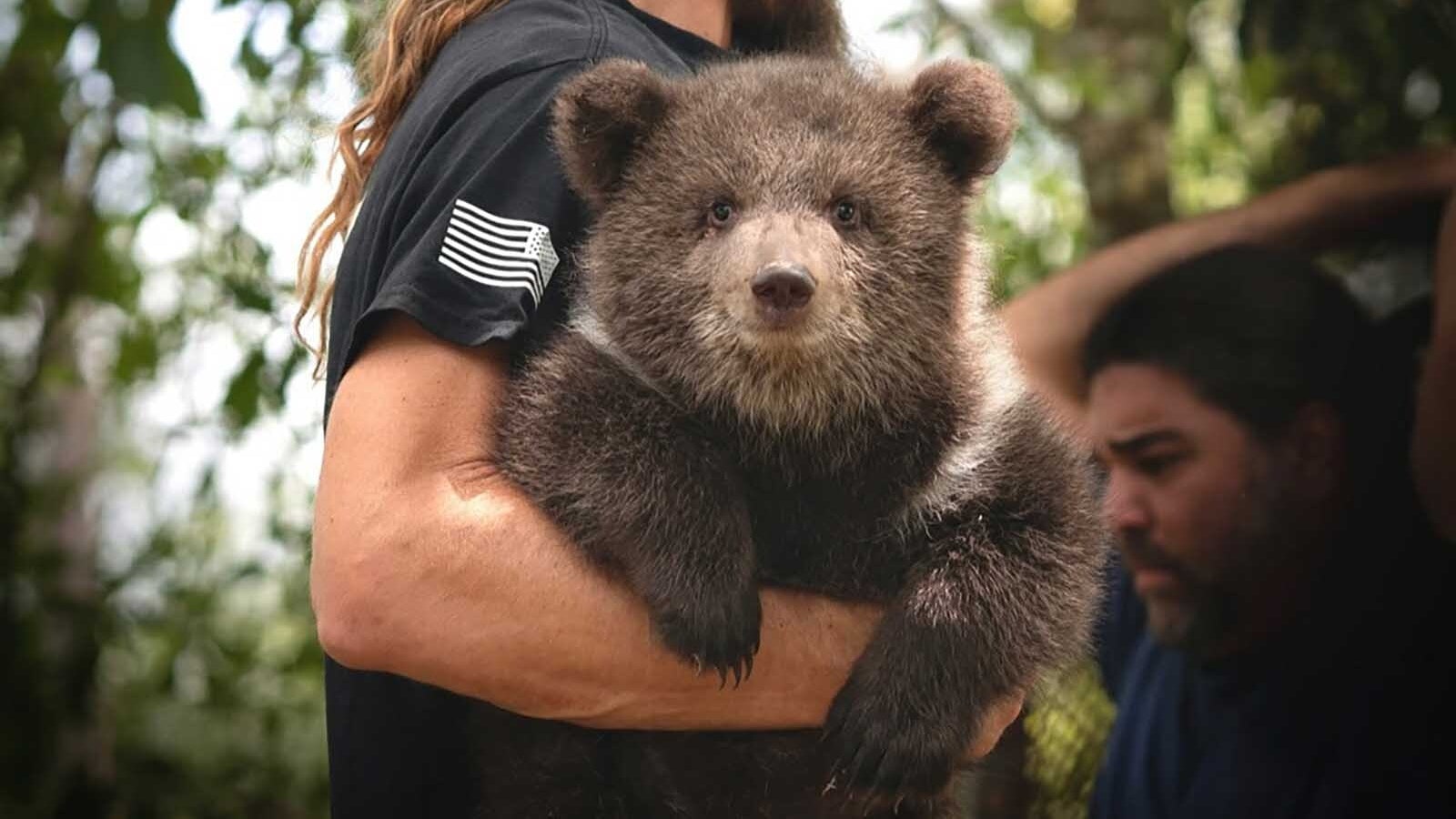Canada geese were once sparce around Upton, a small town in northeast Wyoming.
There’s a thriving honker population there now, thanks in large part to rancher Shery Jespersen rescuing two goose eggs nearly a quarter-century ago.
And a male goose, or gander, that hatched from one of those eggs has shown his gratitude for 24 years. Each spring he returns to Jespersen’s barnyard with his mate and their offspring in tow.
“It seems like a miracle every time they come back,” Jesperson told Cowboy State Daily.
Saving Two Eggs
The Jesperson ranch is in Weston County near Upton, right where the Wyoming section of the Black Hills ends and the vast Thunder Basin National Grassland begin.
It’s ideal habitat for Canada geese to nest during the spring and raise their young over the summer before heading south for the winter.
Historically, it had a thriving goose population.
“This part of northeast Wyoming where we live, it turns out, is on a major migratory flyway,” Jespersen said.
But severe over-hunting during the 19th and early 20th centuries and other setbacks caused wild geese to nearly vanish from the area.
About 25 years ago, the Wyoming Game and Fish Department started “seeding” nesting pairs of geese in the area, hoping the population would eventually bounce back, she said.
There are three wastewater lagoons across the road from the ranch, and “the third one is clean,” Jespersen said. A pair of geese nested there.
Every once in a while, Jespersen would venture out and check on the clutch of eggs in the nest. At first, everything seemed great. There were nine eggs in the nest. A good crop of hatchlings was on the way.
But then foxes discovered the nest.
“I started hearing a fox-and-goose fight every night,” and the number of eggs in the nest steadily shrank, Jespersen said.
After a few nights of fox raids, only two goose eggs remained.
Jesperson had a bold idea.
Her bantam chicken hens “are excellent mothers,” she said.
What if she rescued the last two eggs, and let the chickens have a crack at incubating them until they hatched?
“I figured, those last two eggs would be fox poop soon anyway, so I might as well give it a try,” she said.

‘A Good Children’s Book’
The bantam hens took right to their new duty.
“Bantams are small chickens, and goose eggs are huge. The first hen crawled up on top of one. She looked like she was trying to sit on a football,” Jespersen said.
A second hen followed suit.
“I really wondered if those little hens could produce enough heat for these goose eggs,” so it became a game of wait-and-see, she added.
The little bantam hens pulled it off, hatching two Canada geese, a male and a female.
Jespersen let the geese grow and eat their share of chicken feed for nutrients. But otherwise, she didn’t intervene.
“I had no intention of keeping them,” she said. “I didn’t want to have pet Canada geese. I just wanted to help bring the population back.”
The young geese, or goslings, grew quickly, and before Jespersen knew it, they developed their flight feathers.
“They would use our long driveway as a runway, and start running down it, trying to fly,” she said.
One of the mama bantam hens would run after the young geese, as if she wanted them to stay.
“It would make a good children’s book story, watching this bantam hen chasing after the geese, as if she was worried about them leaving,” Jespersen said.
But letting the geese leave was the goal all along. And when the fall migration began, and the young geese “heard some of their own kind honking,” they joined up with the other wild geese and disappeared, she said.
“When it got cold, they left. And I thought, ‘That’s nature. That’s to be expected. I raised them, and now they’re gone. I did it.’”
Gander Returns With Family
She figured she’d seen the last of those geese, particularly when they didn’t come back the following spring.
But the spring after that, the gander showed back up in the barnyard with his mate.
Canada geese select their lifelong mates during the winter, “and the female goes where the male goes,” she said.
So, she figured that the female goose she’d hatched, if it was still alive, had followed its mate to another location.
The gander went boldly into the barnyard to get a share of chicken scratch. But his mate, “being a wild goose” was hesitant at first, Jespersen said.
But gradually, she too became comfortable enough to waddle into the barnyard and eat her fill.
And so it became a springtime routine.
“Every year, they’d come back. About the first week of March, they’d come back here and eat, to fatten up after their winter. And then they would go leave to nest for the summer,” Jespersen said.
Sometimes, they’d show up with their young from the previous year. One spring, the geese had a whopping 10 offspring in tow.
But the offspring didn’t stick around long, because their parents wouldn’t let them.
“Just like with other animals, when it’s time for the male and female to nest, they’d run off the youngsters,” Jespersen said. “You’ll see them out there, chasing the kids off, like they’re saying, ‘Get out of here, go find your own life.’”

‘I Think They’re Geriatric’
Jespersen said wildlife biologists told her that Canada geese live an average of about 10-12 years, because many are killed by wild predators or human hunters.
She knows the gander that returns to her barnyard every spring hatched 24 years ago, and she suspects his mate is about the same age.
“This year, they came here a lot later than usual and they didn’t nest,” Jesperson said. “I think it’s because they’re geriatric” and might be finished producing offspring.
She has no idea where the geese have been spending their winters. But she guesses it must be somewhere safe – such as a city park in Denver or Salt Lake City.
That could explain their longevity, she said.
One Person, One Goose Make All The Difference
Jespersen said she appreciates the recovering goose population in her area.
She added that hunting can play a role in goose conservation, as their numbers surge.
“Once their numbers are up, people can hunt geese again. There’s a place for hunting, I don’t have a problem with hunting at all, when we have the number of geese for it,” she said.
It’s great that the boisterous honking of Canada geese, once a rare sound around her place, is common.
“It’s nice to hear them. It’s nice to have them around. It’s nice to have things around here that should be around here,” she said.
And it’s amazing to think that it all started with a pair of eggs, and one goose that decided to keep coming back, she added.
“You know what they say, that one person can make a difference. Well, one gander can make a difference, if he brings his wife with him,” Jespersen said.
Mark Heinz can be reached at mark@cowboystatedaily.com.





